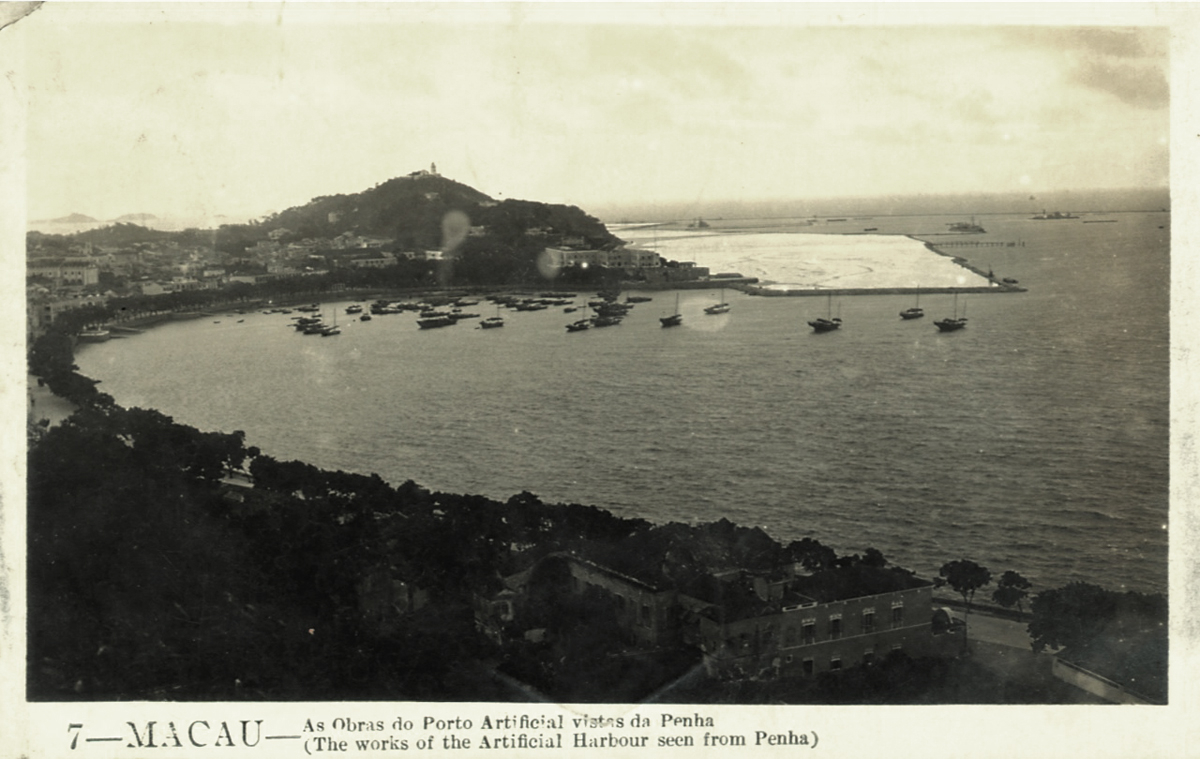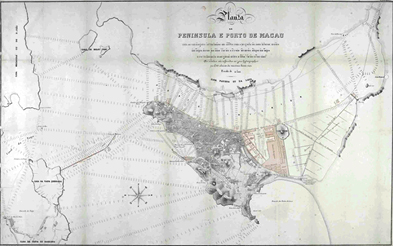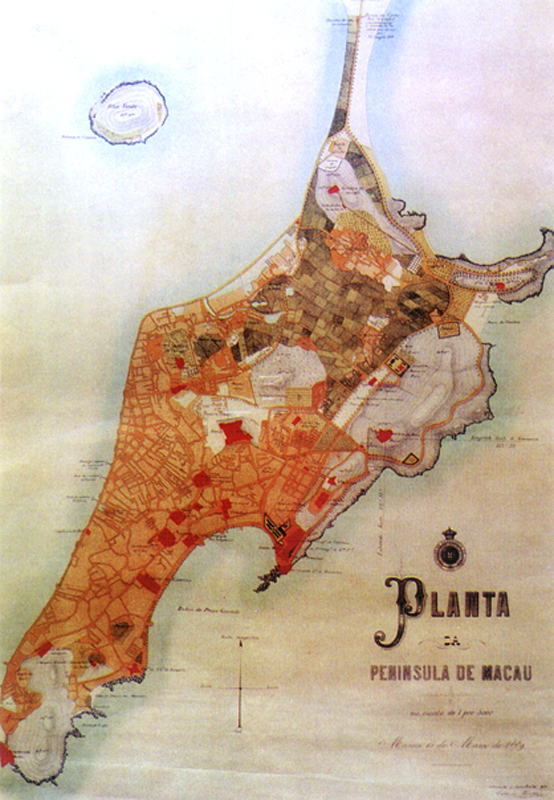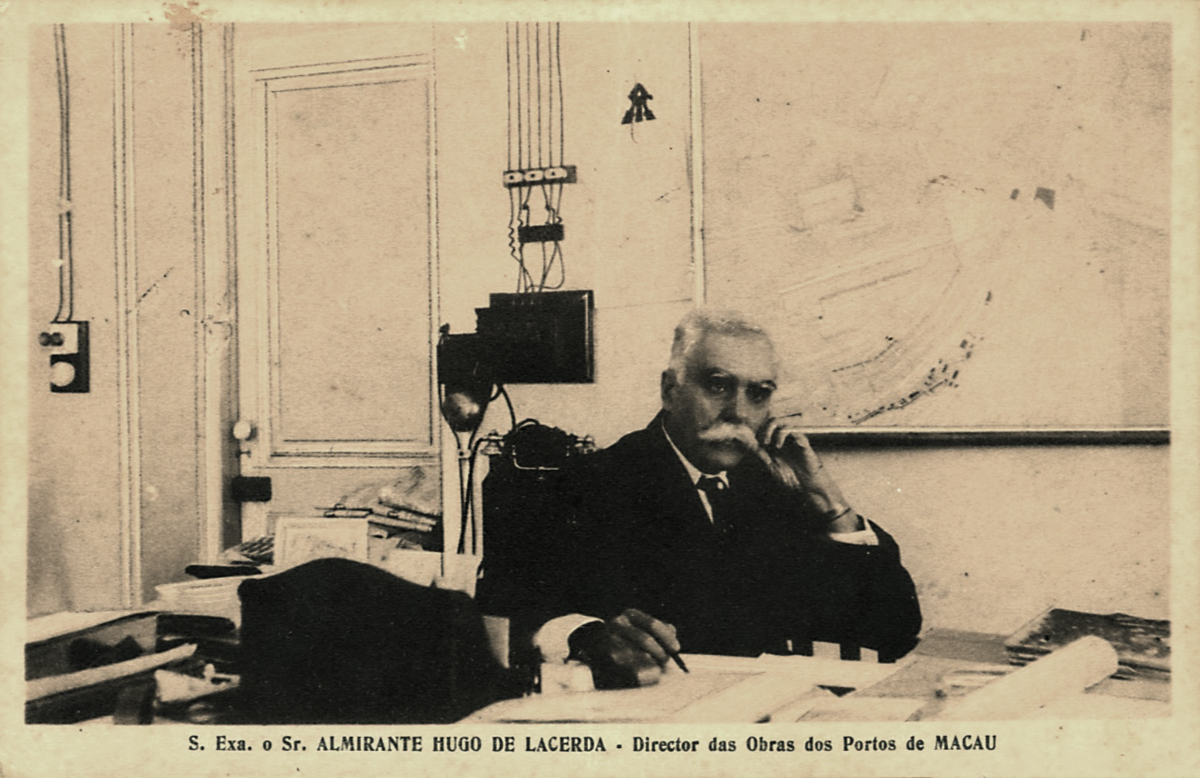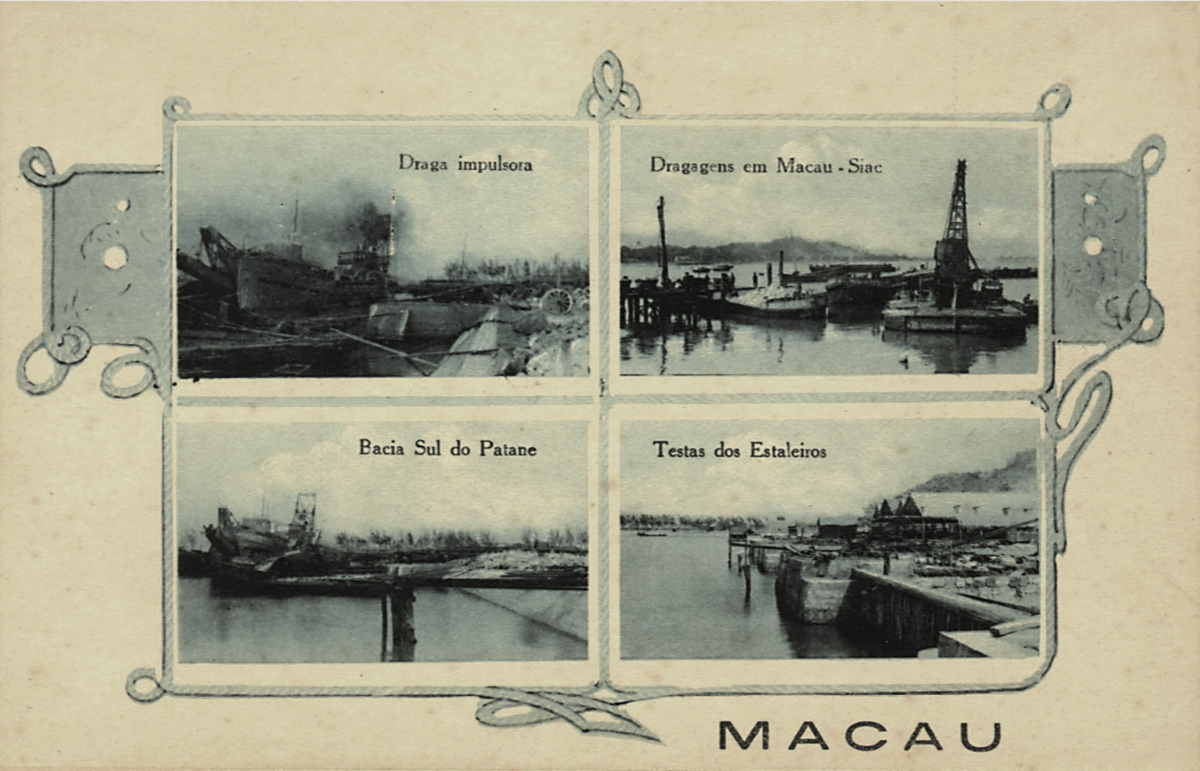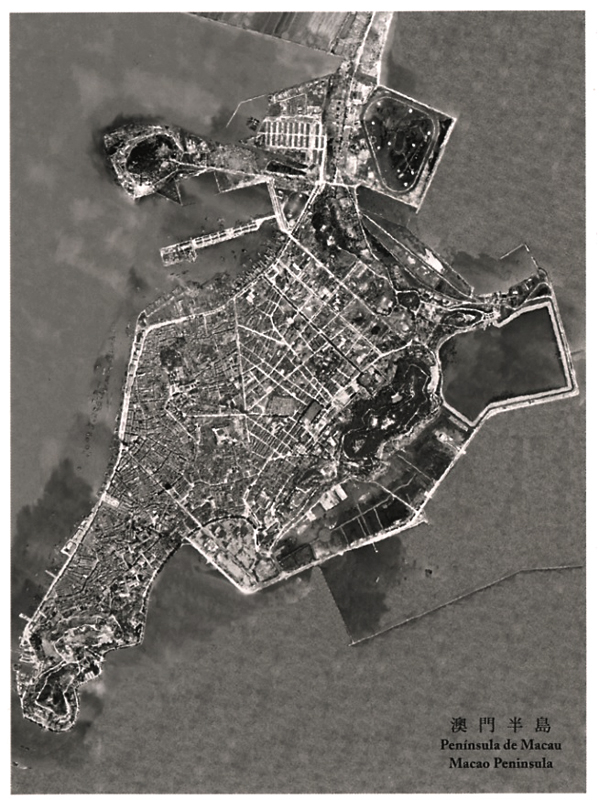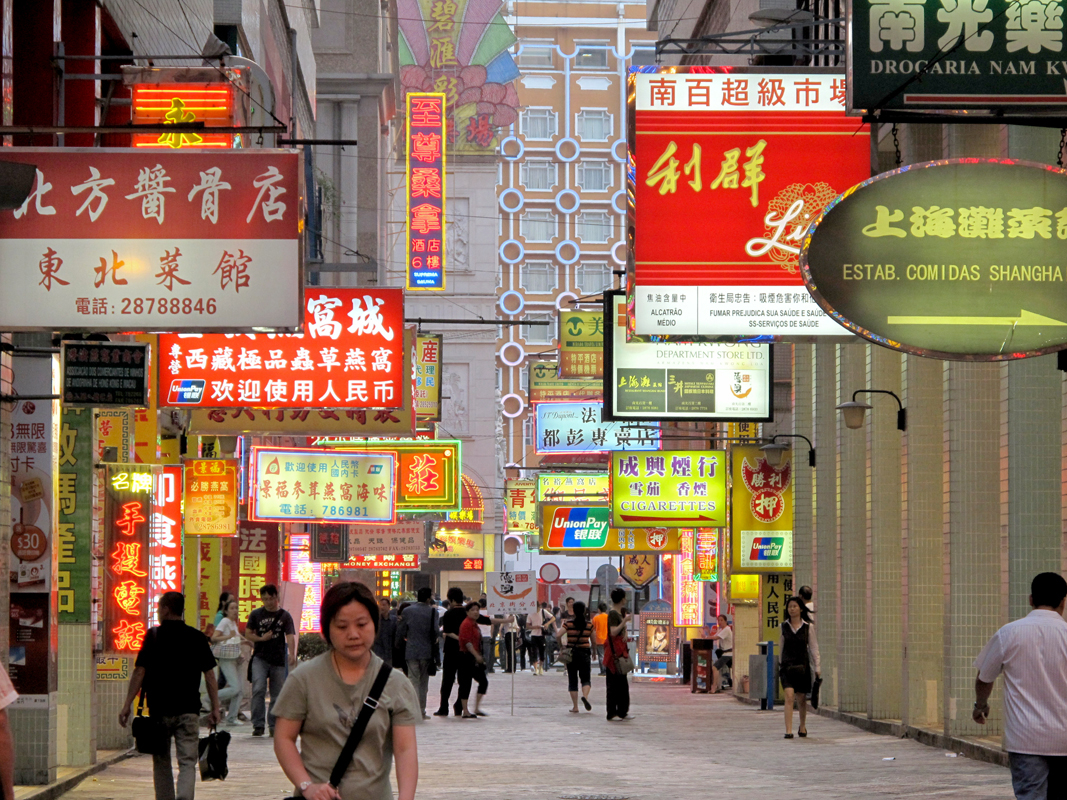Macao’s (Macau) position as a port for international trade was replaced by Hong Kong after the latter’s opening-up. In response to this, the Portuguese Macao government launched a series of projects between the late 19th and early 20th century to revitalise the port of Macao, bringing radical changes to the Macao Peninsula. It invited engineers to carry out improvement works to transform the formerly curved harbour into a straight shoreline for the Inner Harbour by the end of the 19th century. However, the Inner Harbour’s riverbed has been facing siltation, and thus could not be relied solely to achieve the revitalisation of the port of Macao. Therefore, the Portuguese Macao government carried out a series of land reclamation projects between 1919 and 1938 to create new land at the northwestern, northeastern, and southern ends of the Macao Peninsula, including Fai Chi Kei, Areia Preta, and Zona de Aterros do Porto Exterior to develop a deep-water port. Unfortunately, the large areas of new land were not effectively used. It was not until the 1970s and 1980s that these areas were developed for commercial and residential use.
|
|
How did Macao’s shipping status change after the Opium War? |
|
|
See answer below. |
The Inner Harbour in 1880. It has long been the most important port in Macao.
Engineer Adolfo Loureiro proposed a plan to improve the port of Macao in 1884. The photo shows a map relating to the plan.
The deficiency of water depth and chronic siltation in the port of Macao hindered shipping. The Portuguese government sent an engineer, Adolfo Loureiro, to Macao to survey and propose a plan to improve the port in 1883. Loureiro proposed an renovation plan to improve the Inner Harbour after a survey in the following year. The plan suggested to straighten the curved harbours, and to build a breakwater between Macao and Taipa to relieve siltation.
A map of Macao in 1889
Adolfo Loureiro’s proposal could only maintain the waterway of the port of Macao but could not improve the berthing condition. In his frank admission he dared not to propose a reconstruction plan for fear of angering the British. He was also worried that the plan would put Macao under a heavy financial burden.
A photo of Almirante Hugo de Lacerda, a major promoter of land reclamation and port projects. He was once the Director of Macao Maritime Administration and the Director of the Port Engineering Department. (Collected by Mr. Lei Kun-min, provided by Macao Association for Historical Education, cited from “Macau Memory”, Macao Foundation)
Almirante Hugo de Lacerda became the Director of Macao Maritime Administration in 1911 and began to study the plan for constructing an outer harbour in Macao in 1914. The Portuguese Macao government set up the Macao Harbour Improvement Commission to plan and build harbours on the Macao Peninsula in 1918. Lacerda was appointed as the Director of the Port Engineering Department to be responsible for land reclamation and new harbour construction projects in the same year. He once served as the Acting Governor of Macao in 1926. The main road Avenida do Almirante Lacerda in northwest Macao was named after him.
A floor plan of urban Macao and the new port from 1927. The plan shows the creation of Zona de Aterros do Porto Exterior (the outer harbour) and the port of Areia Preta, while the area between Patane and Ilha Verde was planned to be a dock or a typhoon shelter.
Engineering vessels carrying sand and gravel for land reclamation in Macao. (Collected by Mr. Lei Kun-min, provided by Macao Association for Historical Education, citied from “Macau Memory”, Macao Foundation)
Zona de Aterros do Porto Exterior under construction (Collected by Mr. Lei Kun-min, provided by Macao Association for Historical Education, cited from “Macau Memory”, Macao Foundation)
The Portuguese Macao government commenced the planning of a large port reconstruction and land reclamation project led by Almirante Hugo de Lacerda, the Director of the Port Engineering Department, in 1919. The costly project (MOP 12 million) that changed the landscape of the Macao Peninsula radically lasted for almost 20 years from 1919 to 1938. The first part was carried out between 1919 and 1924, during which the northwestern part of the Macao Peninsula was reclaimed. Fai Chi Kei was created as a dock and typhoon shelter. The second part was carried out between 1923 and 1938, when the northeast and southeast of the Macao Peninsula were reclaimed to create new land including Areia Preta, Hipódromo, and the Zona de Aterros do Porto Exterior as new harbours.
An aerial view of the Macao Peninsula in 1941, showing the drastic changes in its landscape following a series of reclamation projects. (Collected by Mr. Lei Kun-min, provided by Macao Association for Historical Education, cited from “Macau Memory”, Macao Foundation)
Ships loading and unloading cargoes in the Inner Harbour of Macao in the 1930s. The land reclamation projects between 1919 and 1938 failed to ease the over-dependence on the Inner Harbour, leaving the revitalisation of the port of Macao a challenge.
Streets and shops at the Zona de Aterros do Porto Exterior. Although the land reclamation projects create new land such as Fai Chi Kei, Areia Preta, and Zona de Aterros do Porto Exterior in Macao, these areas were not used effectively. It was not until the 1970s and 1980s that they were developed for commercial and residential use.
|
|
How did Macao’s shipping status change after the Opium War? |
|
|
The opening-up of Hong Kong and several ports in mainland China dealt a heavy blow on Macao’s international trade. However, the opening-up of mainland ports also encouraged shipping development, which created a new shipping market for Macao. Ships from the mainland increased rather than decreased, transforming Macao from an international trading port to an entrepôt for regional shipping in the late 19th century. |
Photo credit: Macao Foundation (pictures 4, 6-8), Fotoe (pictures 9 and 10), and misc. photo sources.




